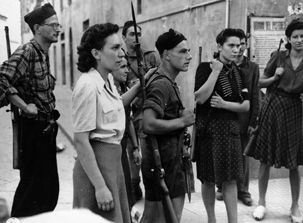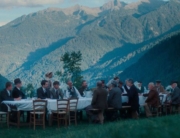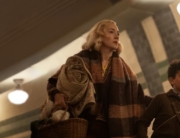What Americans may know of World War II’s impact on Italy is often centered on the Allies’ liberating invasion and the many World at War-type documentaries that repeat the footage of partisans hanging Benito Mussolini’s dead body upside down. Additionally, the impact of the Holocaust on Italian Jews is remembered through Vittorio De Sica’s drama The Garden of the Finzi-Continis (1970). My Italian Secret: The Forgotten Heroes fills in a gap with personal stories and the return visits of Jews who were hidden by brave individuals, religious institutions, and communities that operated through networks of resistance. Through their help, an estimated 80 percent of Italy’s Jews survived.
With narration by Isabella Rossellini (whose father, Roberto Rossellini, filmed indelible images during and just after the Nazi occupation in Rome Open City and Paisan), director Oren Jacoby weaves family stories from the children of the Italian participants and the Jewish survivors within the historical background presented through excellent maps, archival newspaper headlines (that morph into English translations), and many family photographs. Until Mussolini promulgated racial laws in 1938, Jews from Italy’s European neighbors could file for protected status. (Charlotte Hauptman displays her November 1938 identity card issued when she was born in Milan, 10 days after her mother fled from Kristallnacht.) There were increasing employment and residential restrictions and registration, including “Confino Libero” (Free Confinement) for foreign Jews, and with Italy’s entrance into the war in June 1940, 3,800 Jews were rounded up into 15 internment camps (that were evidently nowhere as bad as the French way stations to the extermination camps).
Oppression considerably intensified with the German invasion and occupation in September 1943. At a hospital in Rome, Dr. Vittorio Sacerdoti confounded the Nazis by setting up a “K ward” for an extremely infectious and fictional disease, which he named after German Field Marshal Albert Kesselring, who was known for being in charge of brutal massacres. While helping Jews became part of the resistance ethos, institutions such as monasteries and convents were also protecting partisans and deserters from the Fascist army. Nuns and monks, still not usually open to outsiders, give a tour where those on the run were temporarily housed, though it’s not clear who high up the hierarchy in various dioceses authorized these activities.
Both the survivors and the locals are very clear about the extent of collaboration, entwined with personal and petty grudges of small-town life, and they point out the financial and security advantages that accrued to those who turned in hidden Jews. (Another new documentary that just premiered at New Directors/New Films Festival, The Creation of Meaning, thoughtfully reflects on the enduring, uneasily legacy in Italians’ attitudes today of right-wing politics and the acclamation for the partisans’ anti-German resistance.)
The emphasis for most of these efforts was getting forged documents to those in danger so they could get across borders to safety among the Allies, shown in realistic-looking reenactments filmed in the Abruzzo region. The key smuggler, and a central figure in the film, was Gino Bartali of Florence, a national cycling champion and the 1938 winner of the Tour de France. Hiding papers in his bicycle frame (as well as a family in his house), he was able to use his celebrity as the Fascists’ exemplar of the Aryan athletic hero to roam the countryside for miles under the pretense of training. (Bartali’s son says his father was silent about his role for decades.) All that “training” actually paid off when he won the Tour de France again after the war in 1948.
Several survivors return to find delighted friends from their childhoods. Townsfolk took turns sheltering them from house to house, and even the police would alert them in advance of Nazi searches. (Vassilis Loules’s similarly styled Kisses to the Children (2013) relates comparable stories of hidden children in Occupied Greece.) None of the survivors reflect on the impact of hiding on their lives, nor is it clarified that, after liberation, all were sent to displaced persons’ camps before they emigrated far from Italy to the United States and Israel.
The documentary is sponsored by the Italy and the Holocaust Foundation, founded to “to share the little known story of the role of Italy and many individual Italians” in helping Jews. (All those in the film have been honored at Israel’s Holocaust Memorial at Yad Vashem as the Righteous Among the Nations.) Yet, there is the unavoidable irony that arms of the Catholic Church are credited with helping to authorize the provision of false identity papers for Jews when the Vatican has been shown to have similarly provided the same service after the war for ex-Nazis to get to South America via the notorious “rat line,” as detailed in Kevin Macdonald’s My Enemy’s Enemy (2007).







Leave A Comment